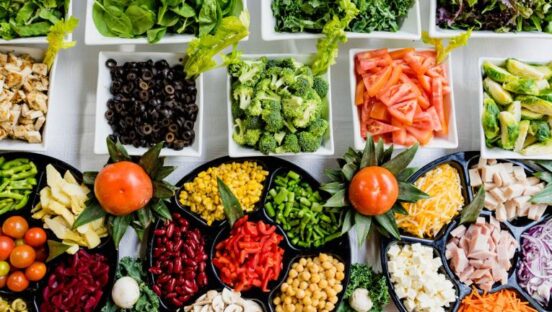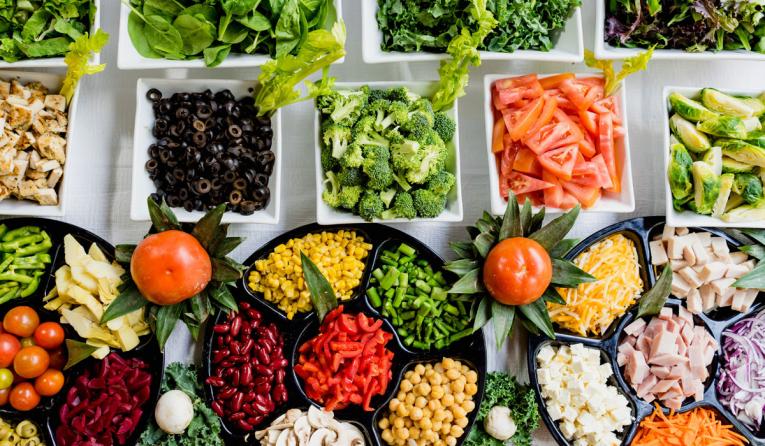Consumers’ preferences are shifting like never before, due to a variety of societal and economic dynamics. How can quick-service restaurants adjust to maintain—and potentially increase—foot traffic during these transformative times? The first step is to gain awareness of the consumer mindset, and then develop a strategy to add value and growth.
The good news is that consumers aren’t trading out of foodservice; however, many are trading down within the segment. They’re choosing less expensive options like quick-service and fast-casual restaurants. According to industry data, food spending is expected to rebound through 2024 and into 2025 as the country moves into a recovery phase following a mild recession.
The evolving consumer behaviors translate into six megatrends that can impact restaurants, from what people eat to where, how, when, and even why.
1. Wellness Wave. Wellness lifestyles are deepening, and the new definition of “wellness” encompasses physical, mental, spiritual, and ecological health. People are focusing on optimizing lifestyles, with an increasingly gentler and more compassionate approach.
Consumers say they prefer foods that aren’t overly-processed or contain unknown ingredients. They’re seeking more plant-based products; yet expectations have evolved. To be relevant with plant-based products today, restaurants must deliver on exceptional taste, nutrition, and sustainability. Examples of these consumer preferences include starch/carb products like chickpea pasta and cauliflower pizza. Gen Z (currently ages 12–25) is the most passionate generation when it comes to plant-based.
From a quick-service restaurant’s perspective, innovation in areas like plant-based and indulgence is vital to driving value, since new menu items are priced an average 10.4 percent higher than legacy items. (Datassential COEX, March 2023)
2. Sustainable Living. Climate crises are driving growing concern for the planet, and this is central to consumers’ decision making. Sustainability is massive and complex, consisting of four interconnected challenges: climate change, biodiversity loss, resource depletion, and poverty and injustice.
The food industry is responsible for over a third of the global greenhouse gas emissions, which drives increased water scarcity, extreme weather, and biodiversity loss. To help combat this, major food manufacturers, foodservice operators and retailers are setting ambitious decarbonization objectives.
Consumers, especially Millennials and Gen Z, seek brands that align with their personal values.
Quick-service restaurants can meet consumers’ appeal for transparency and authenticity by sharing and demonstrating their values, such as through fundraisers, promotions, offering products made from sustainable ingredients, and using recyclable packaging.
3. Snack Attack. Consumers’ eating habits are shifting towards snacks and sweets. This trend continues to grow as meal occasions flatten into a mode of always-on snacking. Nearly half of consumers say they often eat snacks instead of meals at home. In fact, earlier daypart meals are being displaced, as 52 percent of consumers now describe their morning occasions as snacks or mini-meals, according to IRI.
There’s also an increase in foodservice traffic around afternoon snacking, and consumers are snacking while running errands in their cars. This ritual has created a new snacking occasion: pausing in the car for a moment to recharge amid the day’s chaos. This shift presents opportunities for quick-serves in on-the-go snacking, especially with baked goods and beverages.
4. Dynamic Channel Marketplace. The dividing lines are blurring between eat-in and delivery, fast casual and packaged, and vending and restaurants. Consumers expect a seamless blend of omnichannel experiences enabling next level customization, convenience and self-expression. Technology innovations provide quick-service restaurants with a variety of options when it comes to ordering, pickup, and drive-thru.
New store formats are emerging with smaller footprints and dining areas, enabling more off-premise and drive-through opportunities. These formats coincide with NPD/CREST 2022 data showing that 79.5 percent of restaurant traffic was from carry-out, drive-thru and delivery. In quick service, the proportion is even higher, at 86 percent.
To entice consumers, operators are offering enhanced loyalty and subscription models, as well as LTOs, innovation, and premiumization. Some rewards programs even offer secret menus, experiences, and gamification. These strategies all can help quick-service restaurants drive traffic as consumers scale back on frequency of visits.
5. XR Society. The term XR, for “extended reality” or “cross reality,” represents the deepening convergence of real life and digital. Short-form video—like TikTok—is influencing consumption and shortening trend cycles. An astounding 38 percent of users visited a restaurant or ordered food after seeing it on TikTok. (MGH 2022) The hashtag #FoodTok hosts viral recipes and food hack content and has garnered 45 billion views.
Consumers are becoming comfortable with artificial intelligence (AI) and appreciate the convenience, such as reduced wait times, easier ordering, and tailored experiences. Over the past year there have been countless examples where AI and machine learning create efficiencies for operators—especially in order-taking. Major chains are testing voice or facial recognition and GPS-based push notifications, which help resolve labor shortage issues.
6. Work Reimagined. The pandemic ushered in a dramatically different era and permanently altered how employees relate to their employers and their work. People are seeking predictable hours, schedules, and flexibility, plus they want to work on things that matter to them and work for an organization aligned with their values.
As part of the effort to attract and retain employees, employers are focusing on the whole employee—both mental and physical. Nearly half offer mental health benefits like access to a therapist. (Datassential)
The types of jobs available are changing as AI and automation accelerate. Quick-service restaurants employees do less food prep and shelf stocking, and more specialized work like healthy food preparation and online inventory management. Employees are looking to develop their talents, and 74 percet of Millennials and Gen Z say they are likely to leave jobs due to a lack of skill development opportunities. (Workplace Intelligence, 2022)
Amanda Buonopane is the senior manager of Strategic Insights and Innovation for Rich Products, a family-owned food company with over 75 years of success. Operating in over 100 countries, Rich’s offers foodservice solutions that deliciously balance the demands of consumers with the needs of operators. The company’s innovative portfolio includes the finest toppings and icings, pizza and flatbreads, cookies and cakes, breads and rolls, sweet goods, BBQ, meatballs, appetizers, and snacks, as well as gluten-free and plant-based products.














